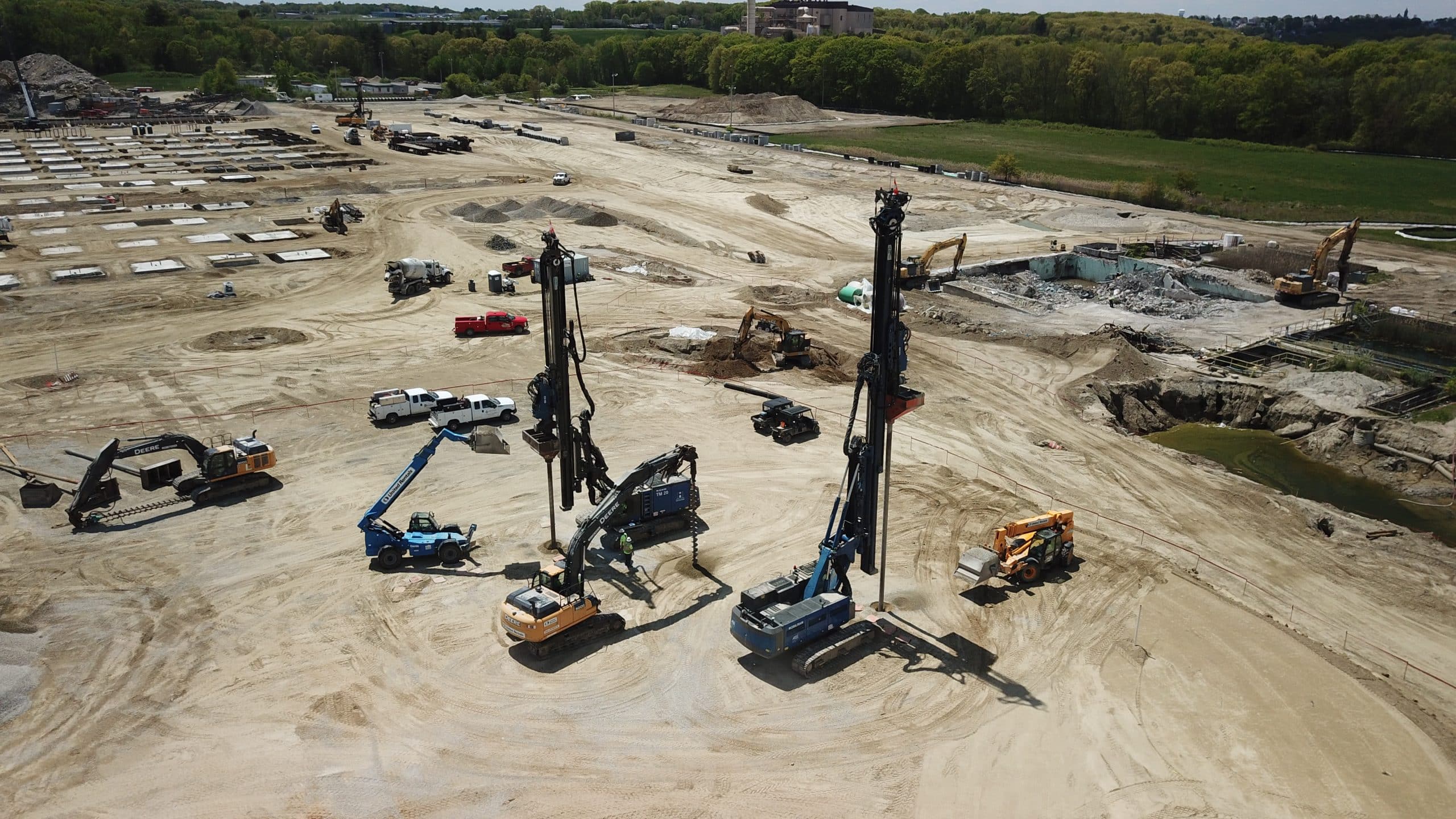The forthcoming Massachusetts State Building Code (MSBC) 10th edition will include requirements for ground improvement for the first time. Below are four Questions & Answers on why the new code requirements are important and how they may affect our local building and engineering community.
QUESTION #1: Why is it important to include ground improvement (GI) in the building code?
Answer: For over 20 years, we have partnered with local builders and consulting engineers to design and build Geopier® Rammed Aggregate Pier® and Rigid Inclusion ground improvement projects to meet the intent of the building code, without specific mention of GI within the code. The MSBC updates will help normalize standards-of-practice that we have developed together over the last two decades on hundreds of completed projects. We anticipate that other Northeastern states will recognize these changes as the standards-of-practice.
QUESTION #2: What are some of the primary GI topics that will be addressed in the building code?
Answer: The MSBC will cover a wide range of important topics. Some highlights include:
- GI designers will require a detailed understanding of structural loading such that important geo-structural interaction (such as estimated settlement) can be properly evaluated.
- GI designs shall consider the structural compatibility between GI elements and the supported foundations and slabs. This will include checking for adequate factors-of-safety for shear and bending.
- Rigid Inclusion elements shall be load tested to 200% of the allowable design load.
QUESTION #3: How might the code changes affect consulting structural engineers?
Answer: It is likely that structural engineers (SEs) will be requested to provide more detailed structural loading information during project design development and as a part of GI submittal preparation. For rigid inclusion projects, SEs will likely be further engaged during GI submittal preparation to review and help evaluate factors-of-safety for foundation shear and bending. The most efficient project designs typically come from a collaborative, iterative process between the GI designer and structural engineer. SEs may want to consider including tasks or budgetary contingencies for these items in their proposals to help ensure scope alignment and raise general awareness with the Owner and project team.
QUESTION #4: How might the code changes affect consulting geotechnical engineers?
Answer: Geotechnical engineers (GEs) will likely include further detail in their geotechnical reports and performance specifications, particularly as it relates to GI geo-structural compatibility and field load testing. GEs should also consider advocating for the SE’s involvement regarding foundation shear and bending matters to (again) help ensure SE scope alignment and raise general awareness with the Owner and project team.
Contact us to learn more or to discuss how these changes may impact our local building and engineering community.



